
Almost a century after the entry of hydro-electricity, Nepal has reached a stage of reducing the dependency on dirty traditional and fossil fuel energy to domestically generated green and clean electricity.
Suffering decades of painful power cuts, of up to 16 hours daily, Nepal is now a country with a net surplus of hydro-electricity. For this, credit goes largely to MD Ghising, who has used all his managerial skills, in his first four-year tenure and the first year of this second tenure. Making such big a progress, MD Ghising, on the other side, has made some people jealous as an overwhelming Nepali population is happy and country is getting cash from electricity export.
Amid a function, Energy, Water Resources and Irrigation Minister Pampha Bhusal launched a campaign to increase the consumption of electricity at the kitchen replacing LPG and electric transport replacing the petrol.
Directed and played by Madan Krishna, Hari Bansha Acharya, Raja Ram Poudel and their team, the advertisement campaign will be aired from different national television channels. With technology driving the business, NEA has also launched a new app making it easier for customers to pay their bill.
“Nepal has made some significant progress in generation of electricity. This is the reason we are here. Despite a big export market next to our door where we have been exporting 364 MW of electricity since last April, our priority is to increase the domestic consumption as well to replace LPG and petrol,” said Minister Bhusal addressing the program.
She said that the government is planning to expand supply of electricity all over the country and provide the electricity in cheaper and reduced rate for irrigation and electric cooking of poor and vulnerable population. “We have already started to distribute free electricity to those who use up to 20 units and 75 tariff reduction for the irrigation,” said minister Bhusal.

Although Nepal’s electricity consumption per individual reaches 299 kWh in 2022 compared to 250 kWh in 2021, this is still too low in comparison to our neighbors and other countries.
She said that the plan of providing electricity facility to every house of Nepal is in the phase of completion gradually. “NEA has been working to connect electricity to the remaining houses of the citizens. All Nepali citizens would have access to clean energy within two years as per the plan forwarded by NEA,” said Bhusal.
As out of 753 local levels, 476 local levels have been fully electrified and 242 local levels have been partly electrified. Nepal Electricity Authority has been involved with a plan to provide full service at the partly electrified local-levels.
Likewise, 35 local levels have not yet got electricity service. The NEA has been taking initiatives in a planned manner keeping these local levels in the centre. Specially, some local levels of Karnali have not got electricity service.
The NEA has already announced a tender by making arrangement of sources of Rs 28 billion to take electricity service in these areas. The NEA has made preparation to provide electricity access in all local levels within next two years.
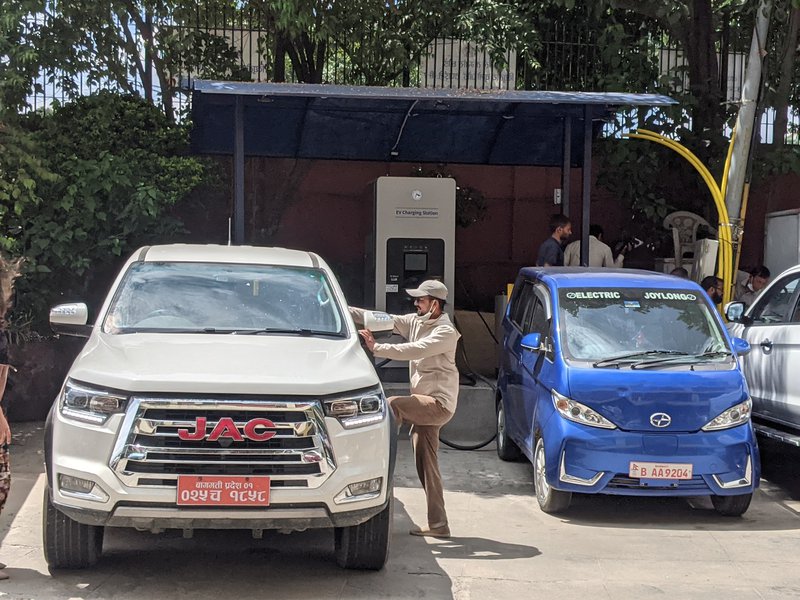
“Five years ago when the country had been passing through 16 hours long power cuts, we used to visit households calling people to use less electricity and use the electric bulb which consumed less electricity. However, we are now calling people to consume more electricity in kitchen and use electric vehicles,” said MD Ghising.
NEA managing director Ghising said works are in progress in a planned way in line with the government's announcement to ensure reliable and quality electricity service to the entire Nepali people by 2024.
In the fiscal year 2072-73 BS, only 62.16 percent households in Nepal were electrified and now this figure rose to 92. 51percent. Four provinces, out of seven, are almost completely electrified.
Eectrification in the districts of Karnali Province has been slightly delayed due to their geographical challenges and remoteness; but works are going on with the target of providing electricity to the entire population by the next two years, according to the NEA.
The NEA is implementing the electrification projects in hilly districts of Lumbini, Karnali and Sudur Paschim Province with around Rs 28 billion soft loan from the Asian Infrastructure Bank and the European Investment Bank.
Consumption Drive
The process of energy transition has already begun in Nepal. Skyrocketing global oil prices have made it virtually impossible for a country like Nepal to import petroleum products. Here is where cheap, clean and green energy is in high demand.
NEA has started the drive to promote electricity consumption from months back signing agreements with Nepal Police and Armed Police. Minister for Energy, Water Resources and Irrigation Pampha Bhusal has taken the initiative of discussing the possibility of use of electricity with Nepal Army Chief General Prabhu Ram Sharma.
Nepal Electricity Authority (NEA) and Armed Police signed a Memorandum of Understanding (MoU) to establish charging stations and use of electric cooking.
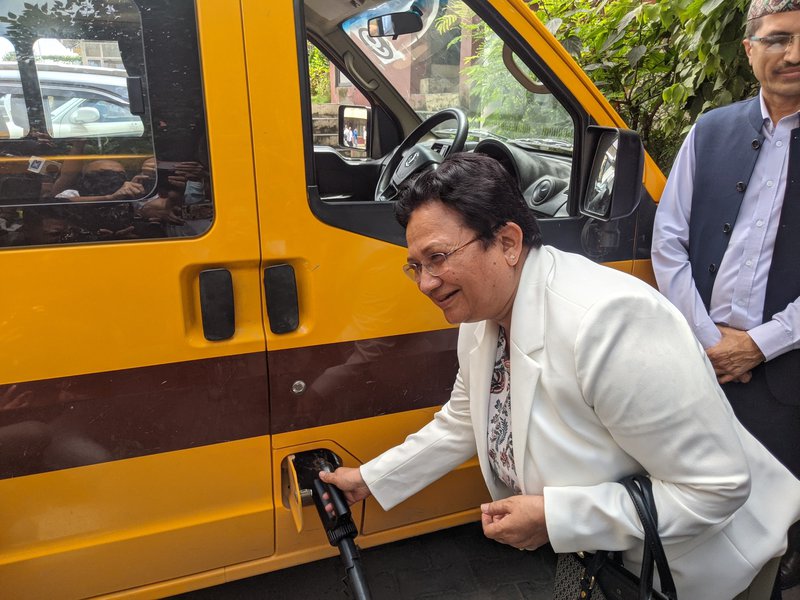
Under this agreement, NEA will construct charging stations and install necessary transformer and improve distribution system to encourage electric cooking in the kitchens for Armed Police Force.
NEA Managing Director Kul Man Ghising and chief of Armed Police Raju Aryal singed an MoU amid a function recently at Armed Police headquarter.
With an aim to displace LPG for cooking, Armed Police is gradually using the induction stoves. NEA will add electric poles and transmission lines and improve the distribution system so that all kitchens can use induction without any interruption.
Addressing the program, Chief of Armed Police Aryal said that replacing LPG by using electricity from Nepal is a big opportunity for us to contribute to Nepal’s economy. “We are taking this as a big opportunity to push the national agenda to replace LPG with electricity.”

He said that using electricity in mess Armed Police can contribute to increase the internal consumption of electricity reducing the import of LPG. IGP Aryal said that using induction we can save the foreign currency used to import LPG. Use of electricity in the kitchen can benefit the country.
MD Ghising said that use of electricity in cooking for Armed Police can contribute immensely to increase internal consumption of electricity. He said that by using green energy generated in Nepal, the country can save over 400 billion spent to import the petroleum products. He said that there is the need to increase the use of electric vehicles and induction in the kitchen.
He said that using electricity is much cheaper than petrol and diesel. MD Ghising said that NEA has been launching programs for improvement of distribution infrastructure as a campaign to make a reliable and quality supply of electricity.
Armed Police has 8 Areas, 44 Battalions, 44 Gulmas, 222 BOPs and 14 training centers. Each of those offices have two messes, armed police has been spending Rs.400 million just for purchasing LPG.
Under the MoU, NEA will support to establish 17 stations in different parts of the country. As per the MoU, the stations will be established in the 17 places including two petrol pumps operated by Armed Police Welfare Service Centers.
Armed Police will provide 15 appropriate lands for NEA to construct the charging stations. The charging stations will be operated and managed by Welfare Fund.
NEA will provide all necessary fund to construct and purchase the equipment required for charging stations. NEA will provide the support for regular maintenance of service center. Armed policy will operate and provide security to charging stations.
Armed police will make necessary arrangements to use the stations by public under the charge fixed by NEA.
As per the provision of electricity distribution regulations, fifty percent of profit generated by the charging stations will be handed over to Armed police Welfare Fund.
NEA has been constructing 51 charging stations all over Nepal to encourage the use of electric vehicles. The modern charging stations consist of 142 kilowatt chargers with 50 kVA transformer and online billing system.
There will be 60-60 kilowatt DC and 22 kW AC charging. This will provide charging facility to big buses and small cars.
Each charging stations will provide service to 300 vehicles a day. Kathmandu will control all 50 stations. The customer can use QR code and mobile apps to pay bill.
Similarly, Nepal Electricity Authority (NEA) is to provide necessary support to Nepal Police to set up charging stations at 25 locations, including five petrol pumps, one currently being operated by the Police Welfare Fund. However, four are proposed petrol pumps in other suitable locations of the remaining police offices.
For this, a memorandum of understanding (MoU) has been signed between the Nepal Police and the Nepal Electricity Authority (NEA) for the construction and operation of electric vehicle charging stations.
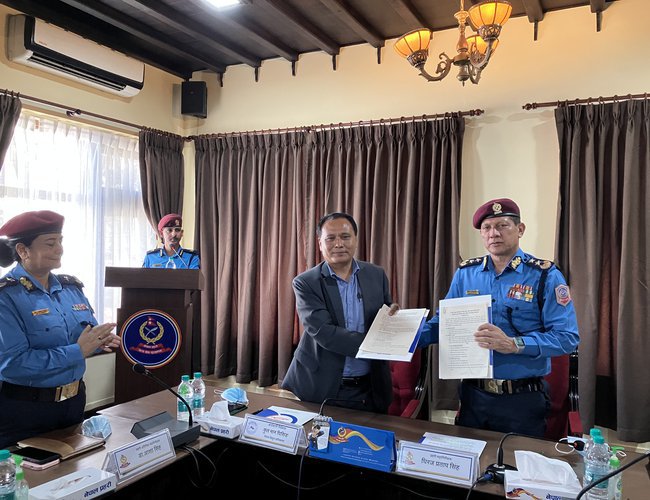
Inspector General of Nepal Police Dhiraj Pratap Singh and Managing Director of NEA Kul Man Ghising signed the memorandum of understanding on behalf of their respective institutions at a program held at Police Headquarters, Naxal.
The charging stations will be operated under the Police Welfare Fund in the long run. According to the MoU, the NEA will purchase all the equipment and infrastructure of the charging stations at its own expense, said a press statement issued by the NEA.
The NEA will also be responsible for the maintenance and regular servicing of the equipment. The police will provide a suitable location for the construction of the infrastructure and after their construction by the NEA; police will operate and guard the charging stations.
While operating the charging stations, it is necessary to arrange that the public can easily use them at a rate fixed by the NEA. The utility will collect the fee paid by the consumers while charging the vehicles.
According to the provisions of the Electricity Distribution Regulations, 50 per cent of the total profit from the electricity tariff will be received by the Welfare Division of the Police as operating and management expenses of the charging station.
In the program, Inspector General of Police Singh said that it was a historic opportunity to sign the MoU for the establishment of charging stations for the consumption of electricity generated within the country using electric vehicles.
Ghising said that the MoU was an important milestone to establish smart charging stations at 25 locations to encourage the use of electric vehicles and reduce the consumption of petroleum products.
"About Rs. 10 million will be required for the construction of infrastructure of the charging stations and necessary equipment. In order to encourage the use of electric vehicles, a special subsidized rate has been set at an average of about Rs. 5 per unit in the electricity tariff," he said.
"The cost of a vehicle running on petroleum is Rs. 15 to Rs. 20 per kilometer, while the cost of an electric vehicle is very cheap, around Rs. 0.60 to Rs. 1 per kilometer."
To encourage the use of electric vehicles, the NEA is constructing modern charging stations that can charge quickly at 51 locations across the country.
Every charging station being constructed by the Authority will be equipped with a 142 KW charger, a 50 kVA transformer for power supply and an online billing system.
Fast charging 60-60 kilowatt DC and 22 kilowatt AC chargers will be installed at each charging station, said the NEA. With this, three vehicles, including big buses, can be charged simultaneously.
The software of the charging station will be kept in the Authority's data centre so that more than 300 chargers can be served.
All the stations will be controlled from Kathmandu. After charging the vehicles, the customer can pay the bill through the QR code and mobile app, it said.
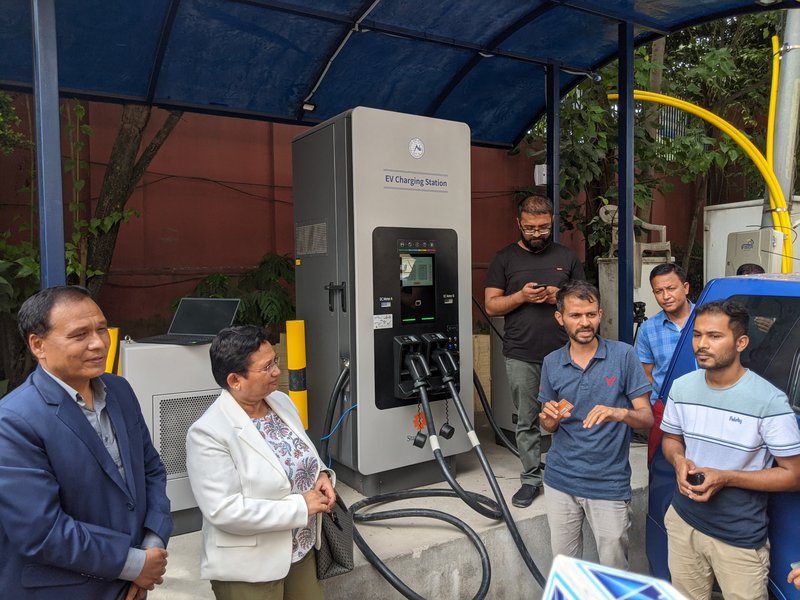
Electricity Is Cheaper
According to energy expert Amrit Lal Nakarmi, cooking with electricity is much cheaper compared to LPG, Kerosene and LPG. Similarly, the cost in driving electric car is very cheap.
According to his study, the prices of electric cooking come down heavily. The cost of cooking in kerosene in 2000 was Rs.270, LPG Rs.430 and electricity Rs.680. However, the current data reverse the situation. Cooking in kerosene will cost Rs.2980, LPG Rs.1872 and the price in electric cooking is Rs. 1000. According to Nakarmi, this is Rs. 900 cheaper than, or by 60 percent cheaper, in cooking on LPG.
Similarly, the prices of per kilometer driving in the electric vehicles cost Rs.1.39 against Rs.16.90 in petroleum. For a car one liter petrol drives 11 kilometer whereas 7.3 kilometer per kilowatt hour. Electric car is 78 percent fuel efficient than petrol engine vehicles.
According to expert Amrit Lal Nakarmi, Nepal’s energy mix in 2021was 4 percent electricity followed by 18 percent petroleum,10 percent coal, 2 percent renewable and 66 percent traditional biomass.
He projected that by 2030, Nepal’s energy mix will be 35 percent electricity followed by 6 percent coal, 23 percent petrol, 2 percent renewable and 34 biomass. However, by 2050, the energy scenario will be reversed, with 76 percent electrricty, 5 percent modern renewable, petroleum will be 1 percent, coal 2 percent and 16 percent biomass.
Opening Charging Stations
To promote the electric vehicle providing fast charging stations, minister for energy, water resources and irrigation Pampha Bhusal inaugurated fast charging stations at NEA’s head office.
Installed under the support of Asian Development Bank, the modern fast charging station aims to encourage the people to use electric vehicles. Inaugurating the station, she said that this is a revolution in electric transition. Nepal’s internal consumption has increased by 22 percent compared to last year; this kind of station will further increase the consumption pattern.
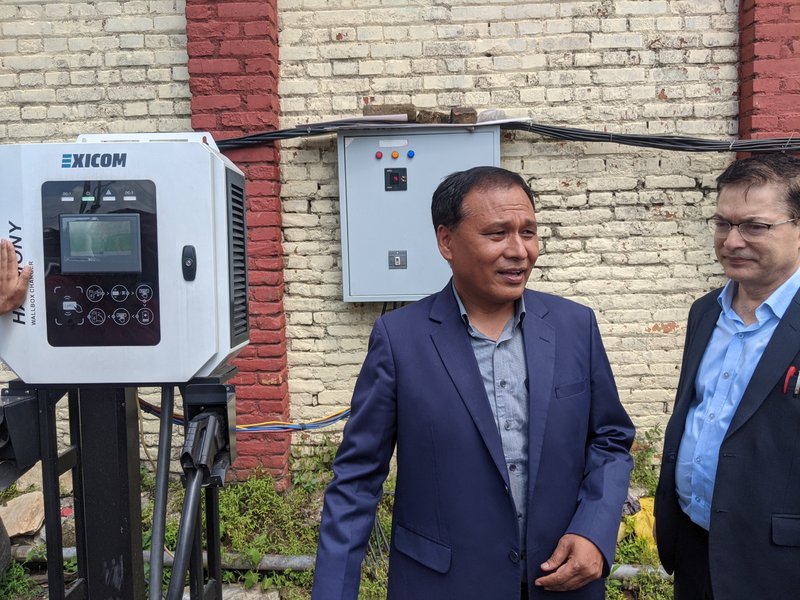
She said that the increased use of hydro-electricity can save Nepal’s foreign currency and help to reduce the trade deficit.
She also said that this kind of charging stations will be established all over Nepal \. According to NEA, high charging stations will be installed in 51 different places in the country.
MD Ghising said that the operation of this kind of charging station will help increase the internal consumption of electricity. The modern and high voltage charging stations will charge the vehicles in a shorter time.
He said that NEA is providing the electricity in reduced rate to the private owner of charging stations. They are charging the customer higher prices. With a total cost of Rs. 337.7 million, the charging stations are supplied by Wanbang Digital Energy Co.Ltd., China.
The cost of charge is 80 paisa per unit for car, 90 paisa for microbus and Rs.1.20 for bigger bus. “The concept of charging stations was out of thinking during the load shedding but it is now reality,” said MD Ghising.
Out of 51 charging stations, 26 charging stations have capacity to charge bigger bus and 25 are for micro-bus and cars.
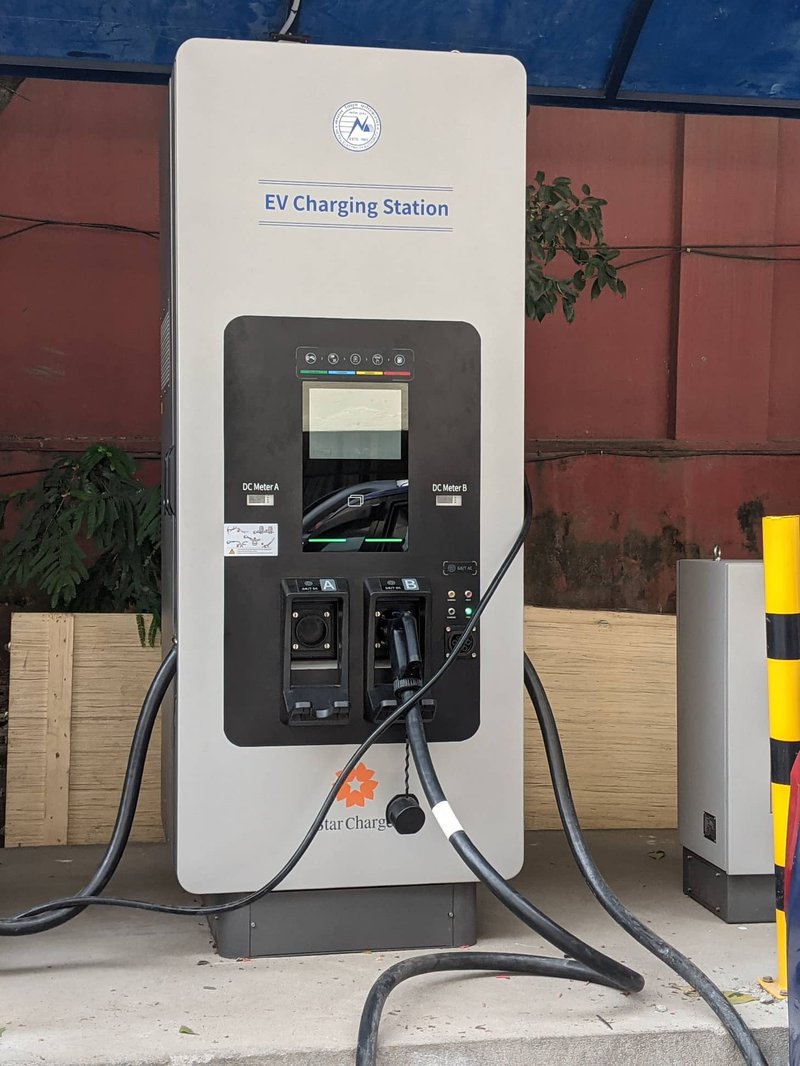
With this campaign, we are now in the phase of energy transition and transition is always a painful and difficult process. Switching from traditional biomass and petroleum to clean and green electricity will be game changer.
As Nepal has been generating around Rs.2 billion a month exporting the electricity to India and saving huge money by providing uninterrupted supply of electricity and reducing the import of Diesel and LPG, this is contributing immensely to Nepal’s economy and reducing the trade deficit.

Keshab Poudel
Poudel is the editor of New Spotlight Magazine.
- HELVETAS NEPAL’S RIVERBED FARMING: Shift From Overseas To Local Farming
- Jul 26, 2024
- POLITICAL SCENARIO : K.P. Sharma Oli's Resurgence
- Jul 21, 2024
- UNDP/MinErgy: An Inventive Approach To Clean Brick Kiln
- Jul 19, 2024
- HELVETAS NEPAL: Nutrition Through Riverbed Farming
- Jul 18, 2024
- NOU Opens To All: Dr. Shilu Manandhar Bajracharya, Vice Chancellor
- Jul 15, 2024
















